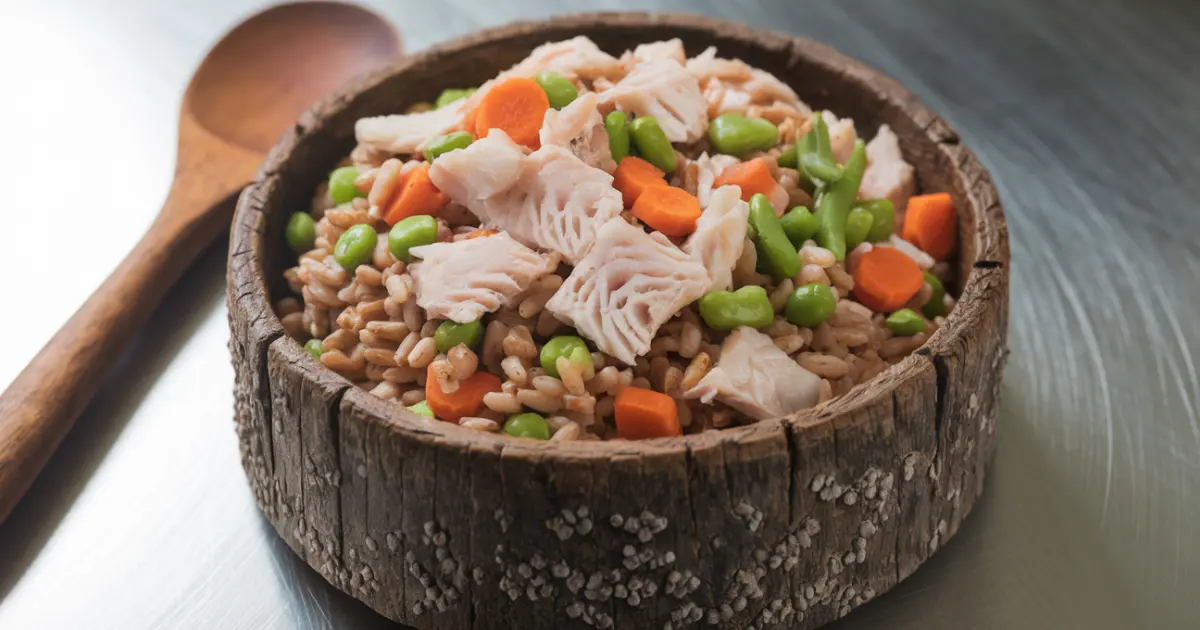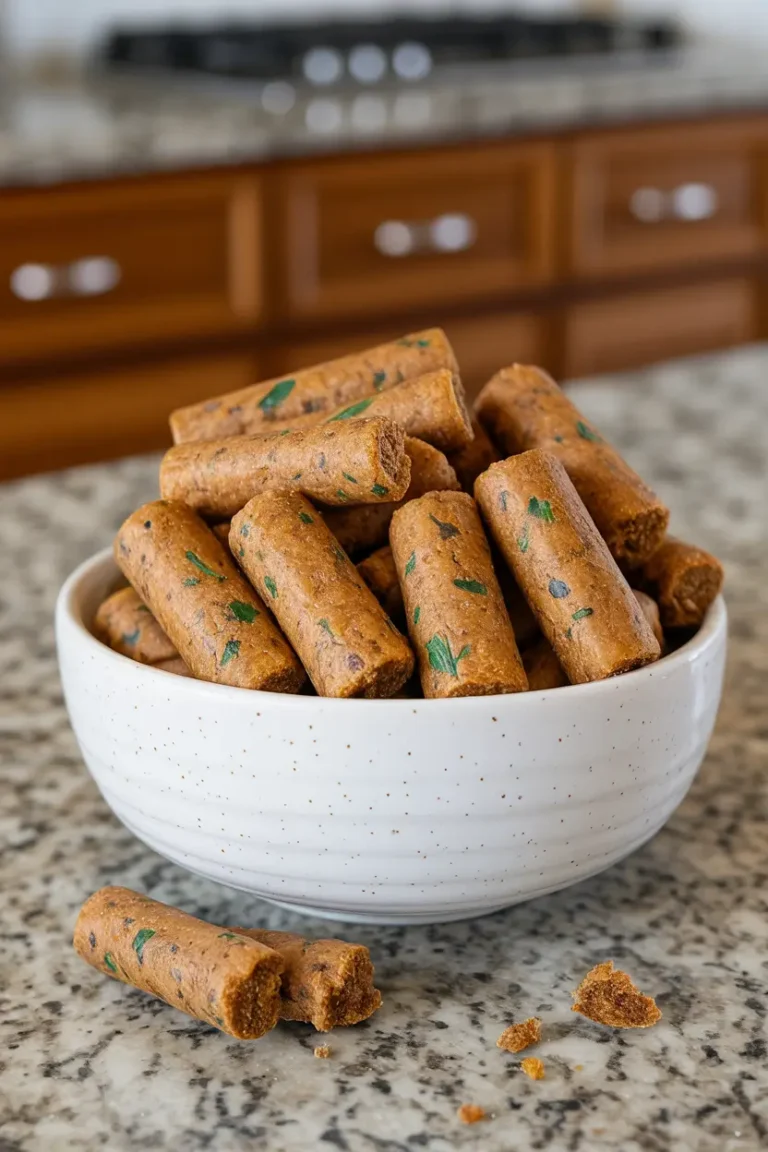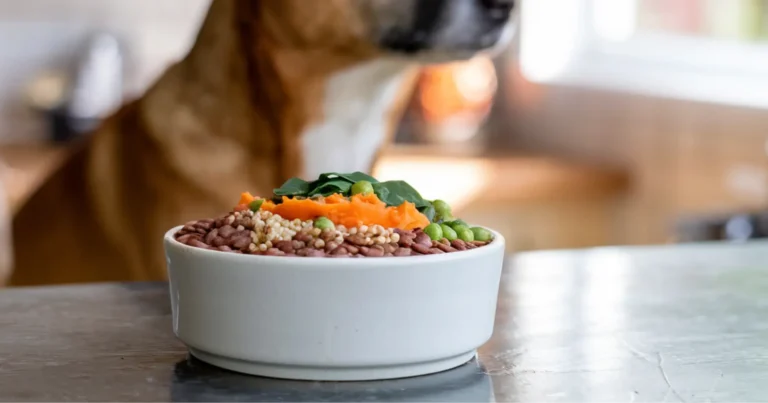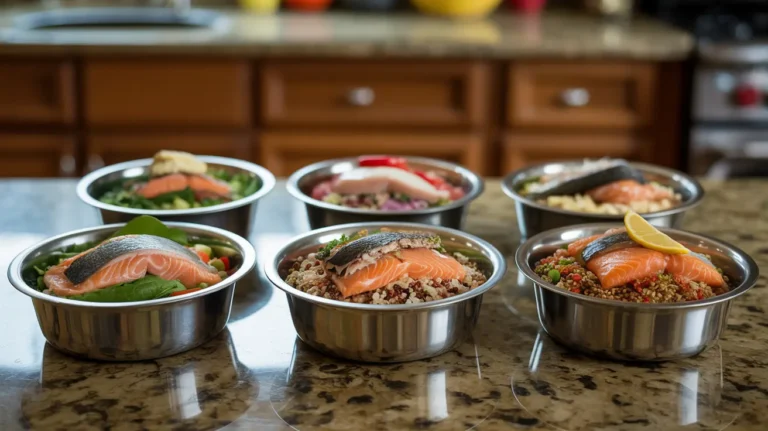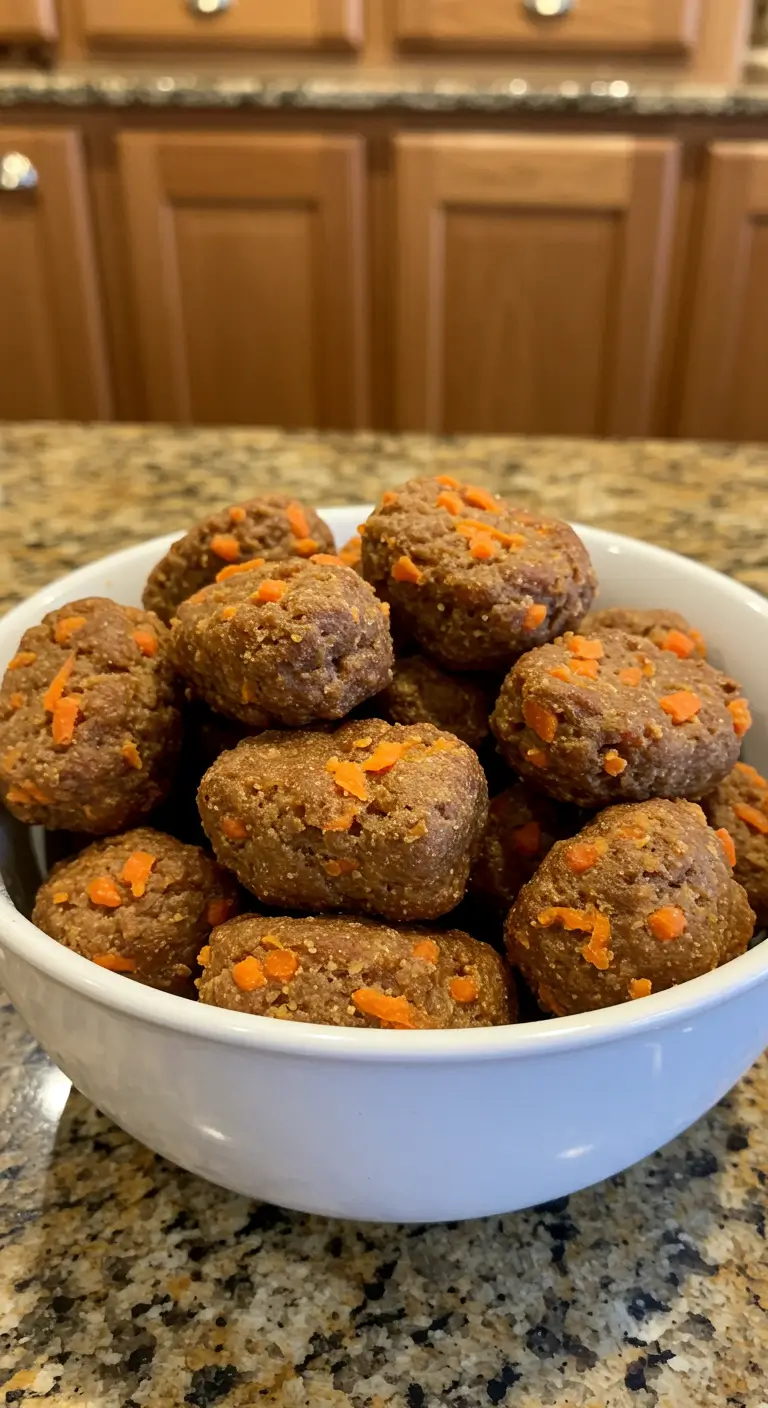Easy Fish Dog Food Recipe That’ll Make Your Pup Go Crazy
Look, I’ll be straight with you, watching your dog’s face light up when you serve this fish dog food recipe is basically priceless. After years of feeding my own pups store-bought kibble and wondering what the heck was actually in those mystery nuggets, I finally decided to take the plunge into making my own fish dog food recipe. Best decision ever, and honestly? Creating your own fish dog food recipe is way easier than you think.
Your furry friend deserves better than processed junk, and this fish dog food recipe delivers everything they need. Plus, making your own fish dog food recipe means you know exactly what’s going into your pup’s bowl, no weird preservatives or ingredients you can’t pronounce. Every fish dog food recipe should prioritize nutrition and taste.
Table of Contents
Why Fish Makes Dogs Go Absolutely Bonkers (In the Best Way)
Ever notice how your dog’s nose goes into overdrive around seafood? There’s a reason for that. Fish is packed with omega-3 fatty acids that make your dog’s coat shinier than a freshly waxed car and support brain health like nobody’s business.
Here’s what makes fish such a superstar ingredient:
• High-quality protein that’s easier to digest than beef or chicken
• Essential fatty acids for skin and coat health
• Low in saturated fat compared to red meat
• Rich in vitamins D and B12 for overall wellness
The thing is, not all fish are created equal when it comes to creating the perfect fish dog food recipe. You want to stick with varieties that are lower in mercury and higher in those good-for-you oils. This fish dog food recipe guide will help you choose the right ingredients.
The Ultimate Fish Dog Food Recipe That Actually Works
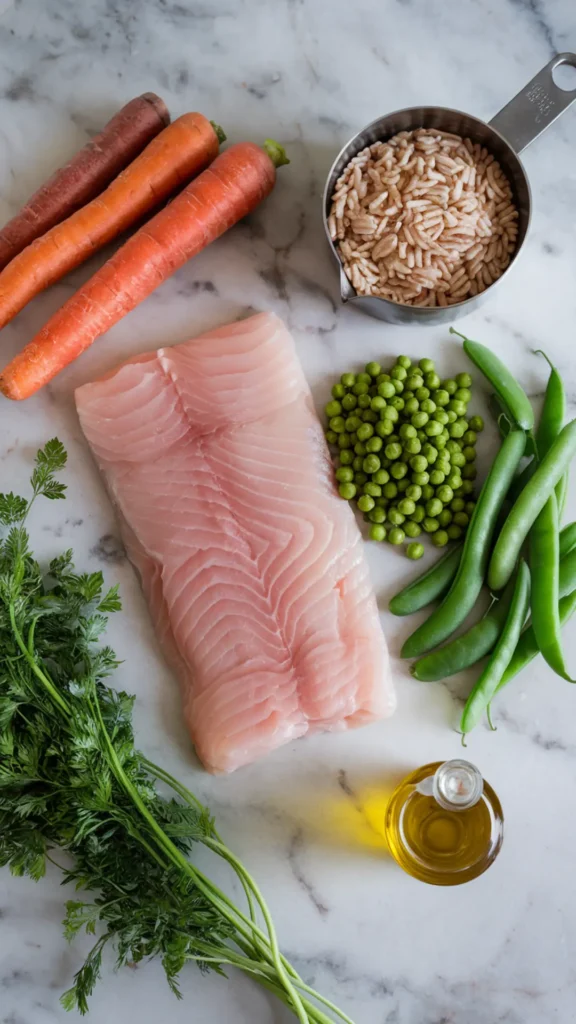
Okay, here’s where the magic happens. This fish dog food recipe has been my go-to for three years now, and I’ve never had a dog turn their nose up at it. This fish dog food recipe makes about 4-5 servings for a medium-sized dog, and it’s absolutely foolproof.
Ingredients You’ll Need:
- 2 cups cooked white fish (cod, tilapia, or haddock work great)
- 1 cup cooked brown rice (the fiber your pup needs)
- 1/2 cup steamed carrots, diced small
- 1/2 cup green beans, chopped
- 1/4 cup peas (frozen is totally fine)
- 2 tablespoons olive oil (for that healthy fat boost)
- 1 teaspoon fish oil (optional but recommended)
Step-by-Step Instructions:
Step 1: Prep Your Fish. Cook your fish by baking, steaming, or poaching, no seasoning needed. Remove all bones carefully because nobody wants a vet visit. Flake it into bite-sized pieces.
Step 2: Get Those Veggies Ready. Green beans and carrots should be steamed until they are soft but not mushy. Dogs need their veggies cooked for better digestion, FYI.
Step 3: Mix It All Together. Combine the flaked fish, cooked rice, and all vegetables in a large bowl. Drizzle with olive oil and fish oil if you’re using it.
Step 4: Storage Game Strong. This fish dog food recipe batch will last 3-4 days in the fridge or up to 3 months in the freezer. I usually portion this fish dog food recipe into meal-sized containers because future-me always appreciates the convenience.
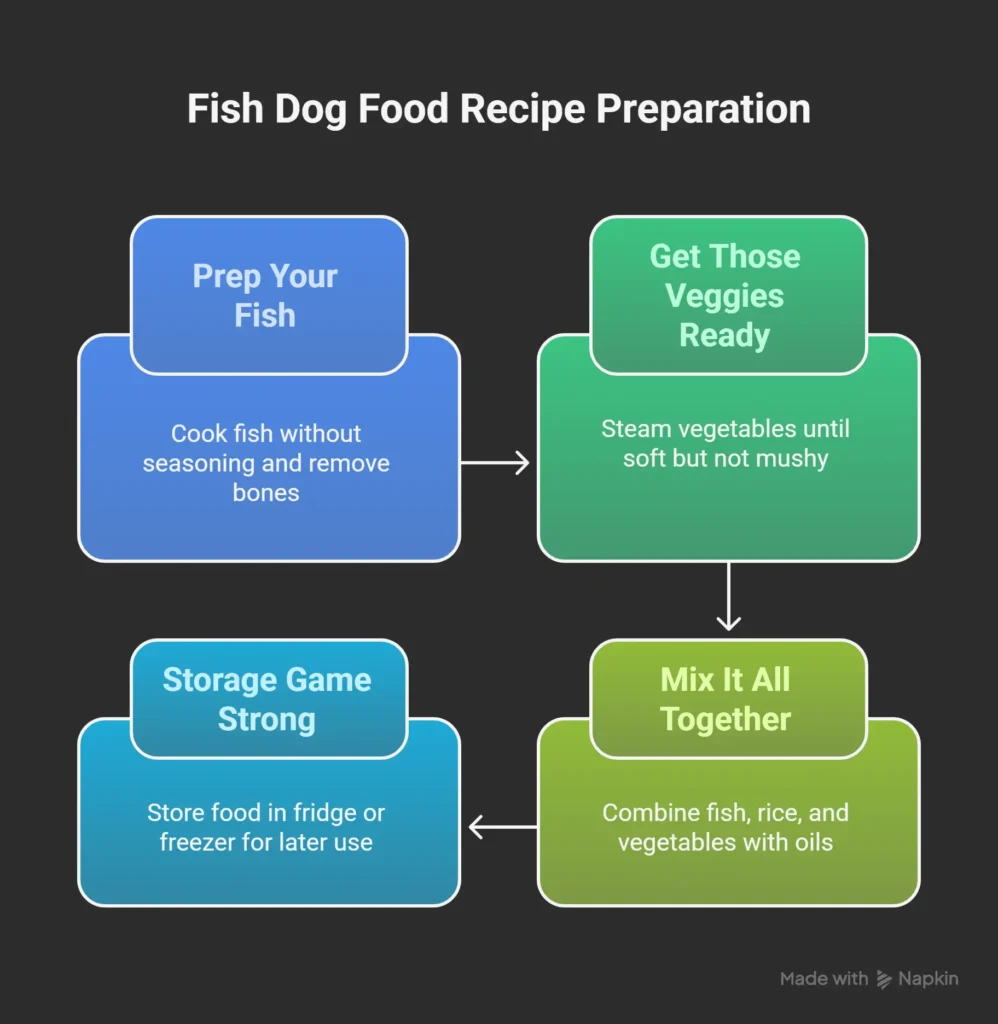
Pro Tips That’ll Save Your Sanity
After making countless batches of this fish dog food recipe, I’ve learned a few tricks that make the whole process smoother than your dog’s post-dinner belly rubs. These fish dog food recipe tips will save you time and effort.
Batch Cooking Is Your Best Friend
Make large batches of your fish dog food recipe and freeze individual portions. Trust me, you don’t want to be making a fish dog food recipe from scratch every single day. Been there, done that, bought the “I’m too tired for this” t-shirt.
Fish Selection Matters
For the best fish dog food recipe results, stick to white fish varieties. Salmon is great too, but save that for special occasions since it’s higher in fat. This fish dog food recipe works best with lean fish options.
Texture Preferences Are Real
Some dogs are picky about texture (shocking, I know :/ ). If your dog prefers smoother food, give this fish dog food recipe a quick pulse in the food processor. Just don’t turn your fish dog food recipe into complete mush.
Nutritional Breakdown That’ll Impress Your Vet
Let’s talk numbers because balanced nutrition isn’t just a fancy buzzword, it’s what keeps your dog healthy and happy.
| Nutrient | Amount per Serving | Daily Value for 50lb Dog |
|---|---|---|
| Protein | 22g | 35% |
| Fat | 8g | 15% |
| Carbohydrates | 25g | 40% |
| Fiber | 4g | 10% |
This fish-based dog meal hits all the major food groups your pup needs. The protein supports muscle development, healthy fats keep their coat glossy, and complex carbs provide sustained energy for all that tail wagging. Any good fish dog food recipe should provide this balance.
Common Mistakes That’ll Drive You Nuts
I’ve made pretty much every mistake in the book with fish dog food recipe preparation, so let me save you some headaches with these DIY fish dog food reality checks. Learning from fish dog food recipe mistakes is part of the process.
Mistake #1: Going Overboard with Portions
Just because your fish dog food recipe is homemade doesn’t mean you can feed unlimited amounts. Stick to appropriate portion sizes based on your dog’s weight and activity level. Even the best fish dog food recipe needs proper portioning.
Mistake #2: Forgetting About Balance
Your fish dog food recipe and rice alone don’t cut it. Your dog needs vegetables for vitamins and minerals. Don’t skip the veggie game in your fish dog food recipe just because your pup gives you those “but I don’t wanna” eyes.
Mistake #3: Inconsistent Preparation
Consistency is key when transitioning to your fish dog food recipe. Don’t go from 100% kibble to 100% fish dog food recipe overnight. Gradual transition over 7-10 days prevents digestive upset with any new fish dog food recipe.
Storage and Safety Tips That Actually Matter
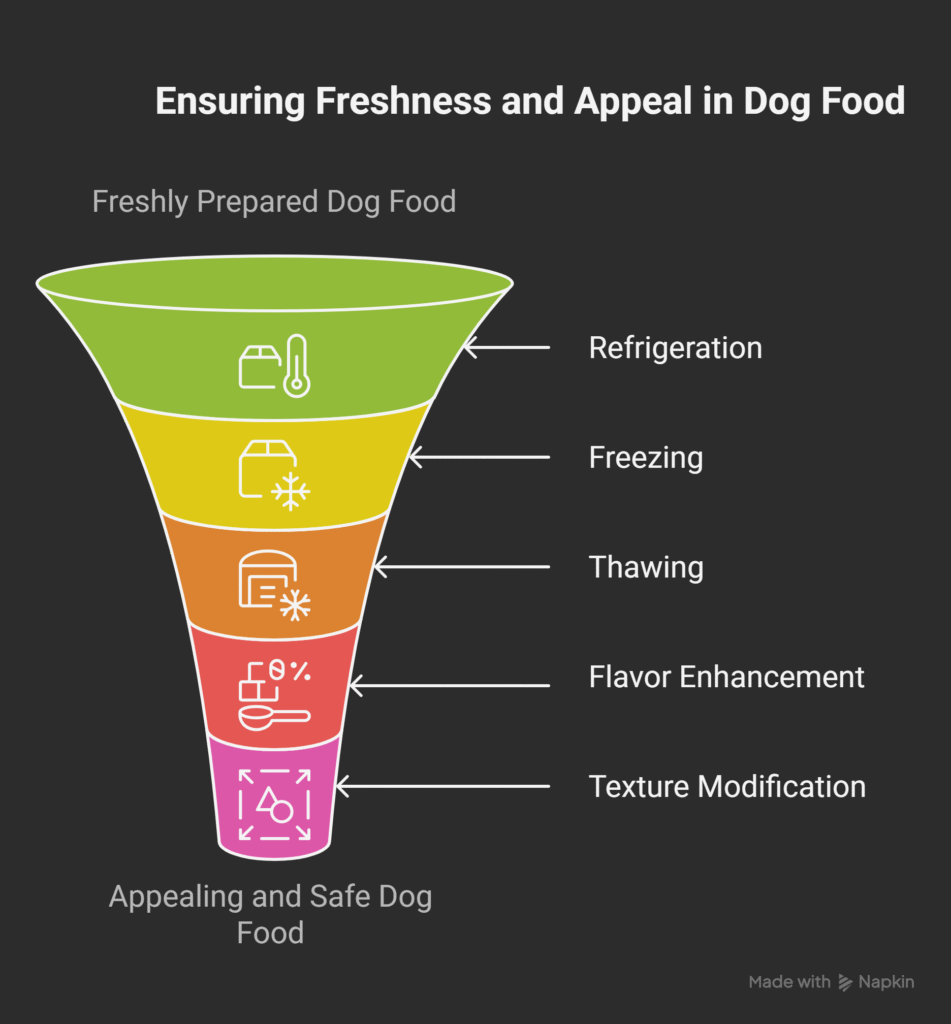
Food safety isn’t the most exciting topic, but it’s crucial when you’re making your own fish dog food recipe. Nobody wants their pup getting sick from something preventable in their fish dog food recipe preparation.
Refrigeration Rules
Fresh fish dog food recipe batches last 3-4 days in the refrigerator, max. After that, you’re playing Russian roulette with bacteria. When in doubt about your fish dog food recipe’s freshness, throw it out.
Freezer-Friendly Approach
Portion individual fish dog food recipe meals into freezer-safe containers. Label everything with dates because three months from now, you won’t remember when you made that mysterious frozen fish dog food recipe blob.
Thawing the Right Way
Thaw frozen portions in the refrigerator, not on the counter. Room temperature thawing creates a bacteria party, and your dog wasn’t invited to that particular celebration.
Customizing Your Recipe for Picky Eaters
Got a drama queen dog who turns their nose up at perfectly good food? Join the club. Here’s how to make your fish dog food recipe more appealing to finicky eaters. Customizing your fish dog food recipe is totally doable.
Flavor Boosters That Work
Add a tablespoon of low-sodium chicken broth to make everything more appealing. Just make sure it doesn’t contain onions or garlic, those are big no-nos for dogs.
Texture Modifications
Some dogs prefer their food warmed slightly. Warm it to room temperature (not hot!) to release more aromas and make it more appealing.
Mix-and-Match Strategy
Start by adding tiny amounts to the food they are currently eating. Gradually increase the homemade portion until you’ve completely transitioned. Patience, grasshopper, good things take time.
Signs Your Dog Is Thriving on Fish-Based Meals
After a few weeks on homemade fish dog food, you should notice some pretty amazing changes. Here’s what to look for:
• Shinier, softer coat that actually feels different to the touch
• More consistent energy levels throughout the day
• Better digestion (yes, we’re talking about poop quality here)
• Healthier skin with less itching and irritation
• Improved dental health from chewing real food textures
If you’re not seeing improvements after 4-6 weeks, it might be time to chat with your vet about adjusting the recipe or checking for underlying health issues.
Different Fish Types and Their Benefits
When it comes to homemade fish dog food, not all fish are made equal. Let me break down the best options and why they work so well for our four-legged friends.
White Fish Champions
Cod is basically the golden retriever of fish, friendly, reliable, and loved by everyone. It is rich in lean protein, has a mild flavor, and contains little mercury. Plus, it flakes beautifully for easy mixing.
Tilapia gets a bad rap sometimes, but it’s actually perfect for dogs. It’s affordable, readily available, and has a neutral taste that even picky eaters usually accept. Just be sure to purchase from reliable vendors.
Haddock brings that slightly sweet flavor that dogs seem to go crazy for. It’s rich in selenium and phosphorus, which support immune function and bone health.
The Occasional Luxury Options
Salmon is like the filet mignon of fish dog food. The omega-3 content is through the roof, but it’s also higher in fat. I use salmon maybe once a week as a special treat, not as a daily staple.
Mackerel packs similar benefits to salmon but with an even stronger flavor. Some dogs absolutely love it, while others find it too intense. Know your audience here.
Fish to Avoid Completely
Tuna might seem like an obvious choice, but the mercury levels make it a hard pass for regular feeding. Save the tuna for your own sandwiches.
Raw fish of any kind is asking for trouble. Parasites and bacteria aren’t worth the risk, no matter what some blogs might tell you.
Advanced Meal Planning Strategies
Once you’ve mastered the basic fish dog food recipe, it’s time to level up your meal planning game. This is where things get really interesting.
The Rotation Method
Even dogs enjoy variety in their lives. I rotate between different fish types and vegetable combinations to keep things interesting and ensure balanced nutrition over time.
Monday/Wednesday/Friday might be cooked with carrots and green beans. Tuesday/Thursday could be tilapia with sweet potato and peas. Weekend meals might feature that special salmon treat.
Seasonal Adjustments
Summer meals can include more cooling vegetables like cucumber or zucchini. Winter meals might benefit from slightly more calories and warming ingredients like sweet potato.
Your dog’s activity level changes with the seasons, too. Active summer months might require larger portions, while cozy winter days need less food to prevent weight gain.
Life Stage Considerations
In addition to more calcium for developing bones, puppies require more calories per pound than adult dogs. Senior dogs might benefit from softer textures and joint-supporting ingredients.
Pregnant or nursing females have completely different nutritional needs. Always consult your vet before making major dietary changes during these critical periods.
Troubleshooting Common Problems
Even with the best intentions, sometimes homemade fish dog food doesn’t go according to plan. Here are the issues I’ve encountered and how to fix them.
Problem: Dog Won’t Eat It
This is heartbreaking after you’ve spent time preparing a beautiful meal. Start with smaller portions mixed into their regular food. Dogs occasionally require some time to get used to new tastes and textures.
Try warming the food slightly to release more aromas. The smell of fish is usually irresistible to dogs, but cold food doesn’t give off much scent.
Problem: Digestive Upset
Transition slowly is rule number one. I can’t stress this enough. Going from processed kibble to fresh food overnight is like switching from fast food to a raw diet; your system needs time to adjust.
If loose stools persist after a gradual transition, try reducing the fat content or cooking the vegetables more thoroughly for easier digestion.
Problem: Food Goes Bad Too Quickly
Proper cooling is crucial before refrigerating. Hot food in the fridge raises the temperature and can spoil other items. Let it cool to room temperature first.
Smaller batch sizes might work better if you’re consistently throwing food away. Better to make fresh meals more frequently than waste ingredients.
Problem: It’s Taking Too Much Time
Batch cooking is your salvation. Spend one afternoon a week preparing large quantities, then portion and freeze. Your future self will thank you when dinner prep takes five minutes instead of an hour.
Prep vegetables in advance by washing, chopping, and storing them properly. Having ingredients ready makes cooking so much faster.
Cost Analysis and Budget Tips
Let’s talk money because homemade fish dog food isn’t exactly cheap. But when you break down the actual costs versus premium dog food, it’s not as expensive as you might think.
Real Cost Breakdown
For a 50-pound dog eating this recipe: • Fish (2 cups): $3-5 depending on type and sales • Rice and vegetables: $1-2 per batch • Total per batch: $4-7 for 4-5 servings
That works out to roughly $1.50 per meal for high-quality, fresh ingredients. Compare that to premium kibble at $2-3 per serving, and you’re actually saving money while providing better nutrition.
Money-Saving Strategies
Buy fish in bulk when it’s on sale and freeze individual portions. I stock up when my grocery store runs its seafood specials.
Frozen vegetables work just as well as fresh and often cost less. They also prolong their shelf life and minimize food waste.
Cook rice in large batches and freeze in meal-sized portions. Rice freezes beautifully and saves time on busy days.
When to Splurge vs. Save
Splurge on fish quality because it’s the star ingredient. Cheap fish often means questionable sourcing or added chemicals.
Save on vegetables by buying frozen or generic brands. Carrots are carrots, regardless of the fancy packaging.
Invest in good storage containers that seal properly. Losing a batch of food to freezer burn is expensive and frustrating.
Health Benefits Deep Dive
The benefits of fish-based dog meals go way beyond basic nutrition. Let’s explore why this investment in your dog’s diet pays off in spades.
Omega-3 Powerhouse Effects
Joint health improves dramatically with regular omega-3 intake. I’ve seen older dogs become more active and playful after switching to fish-based meals.
Cognitive function benefits from these healthy fats, too. Some studies suggest omega-3s may help prevent canine cognitive dysfunction in senior dogs.
Inflammatory response becomes more balanced with adequate omega-3 intake. This can help with everything from allergies to arthritis.
Digestive System Benefits
Easier protein digestion means less work for your dog’s system. Fish protein is generally more digestible than red meat or even chicken.
Better nutrient absorption happens when the digestive system isn’t struggling with hard-to-process ingredients. Fresh, whole foods just work better.
Improved gut bacteria balance occurs with diverse, fresh ingredients. A healthy gut microbiome supports overall immune function.
Skin and Coat Transformation
Reduced itching and scratching often happen within weeks of switching to fish-based meals. Food allergies frequently manifest as skin problems.
Coat texture improvement is usually the first visible change owners notice. The difference in softness and shine is remarkable.
Less shedding might occur as coat quality improves. While genetics play a role, nutrition definitely impacts how much hair ends up on your furniture.
Creating Your Personal Recipe Collection
Once you’ve mastered the basic recipe, it’s time to develop your own collection of healthy fish dog recipes tailored to your dog’s preferences and needs.
Recipe Variations to Try
Mediterranean Style: Add a small amount of olive oil and finely chopped parsley. Some dogs love the herbal notes.
Asian Inspired: Include small amounts of cooked bok choy or snow peas for different textures and nutrients.
Comfort Food Version: Add a small amount of mashed sweet potato for dogs who prefer creamier textures.
Seasonal Recipe Adaptations
Spring recipes might feature fresh peas and early carrots when they’re at peak nutrition and affordability.
Summer variations could include cooling ingredients like cucumber or zucchini to help dogs stay comfortable in hot weather.
Fall menus might incorporate squash or pumpkin for seasonal variety and additional fiber.
Winter meals could include slightly more calorie-dense ingredients to support dogs who are more active in cooler weather.
Special Occasion Recipes
Salmon may be served for birthday meals in place of white fish, with a little plain yogurt added for richness.
Recovery meals for dogs who’ve been sick might include easily digestible white fish with plain rice and a touch of bone broth.
Training rewards could be small portions of the fish mixture without rice, perfect for high-value treats during obedience work.
Key Takeaways for Fish Dog Food Success
Making homemade fish dog food isn’t rocket science, but it does require some planning and consistency. The effort is totally worth it when you see how much healthier and happier your pup becomes.
Remember these essential points: • White fish varieties are your safest bet for regular feeding • Balance is everything—protein, carbs, and veggies all matter • Batch cooking saves time and your sanity • Food safety rules aren’t suggestions, follow them religiously • Gradual transitions prevent digestive drama
Final Thoughts
Honestly? Making your own fish dog food feels pretty amazing. There’s something satisfying about knowing exactly what your furry family member is eating, and the health benefits speak for themselves.
Your dog has been putting up with mystery kibble long enough. Time to show them what real food tastes like, and trust me, they’ll never look at those processed nuggets the same way again. IMO, that tail-wagging appreciation is worth every minute of prep time 🙂
Frequently Asked Questions
How often can I feed my dog fish-based meals?
A balanced diet can include fish two to three times a week. Daily fish feeding isn’t necessary and might lead to an imbalanced diet. Rotate with other protein sources like chicken or turkey for optimal nutrition.
Q: Can puppies eat homemade fish dog food?
A: Yes, but puppies need more calories and specific nutrients for growth. Consult your vet before switching a puppy to homemade food, and consider adding calcium supplements if recommended.
Q: What should I do if my dog has an allergic reaction to fish?
A: Stop feeding fish immediately and contact your vet. Signs include itching, vomiting, diarrhea, or difficulty breathing. Fish allergies in dogs are rare but can happen.
Q: Is it cheaper to make homemade fish dog food?
A: It depends on your local fish prices and the quality of kibble you usually buy. Generally, homemade food costs more upfront but provides better nutrition per dollar spent.
References and Resources
For additional information on canine nutrition and homemade dog food safety, consult these reliable sources:
• American Kennel Club (AKC) – Canine Nutrition Guidelines • Pet Food Industry Association – Homemade Pet Food Safety Standards
• Veterinary Nutritionists Association – Balanced Diet Requirements for Dogs • ASPCA Animal Poison Control – Foods to Avoid for Dogs

